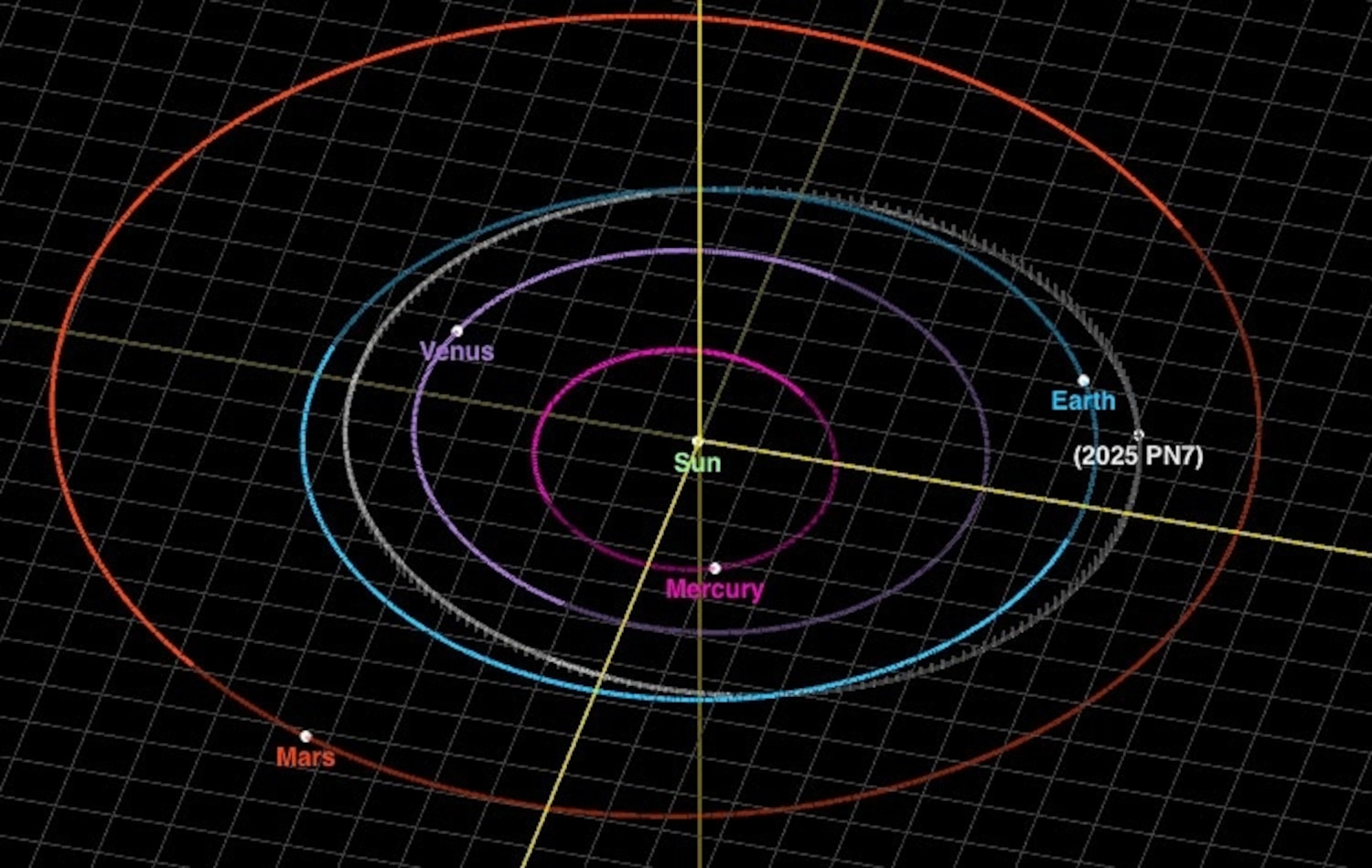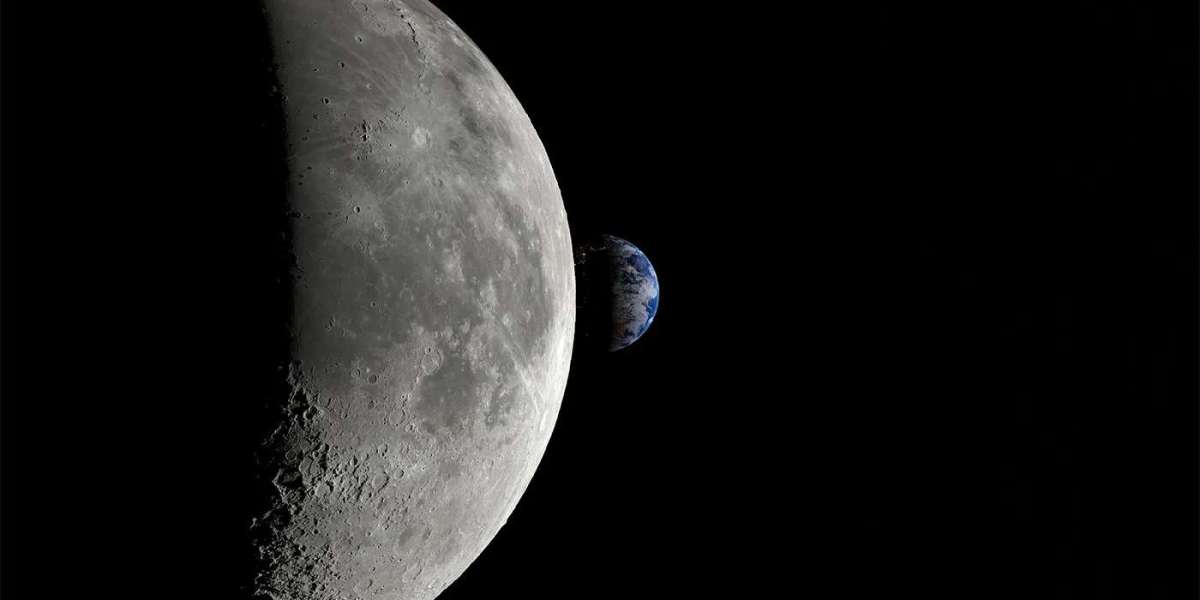article image source: news.northeastern.edu (link)
Earth, long known for its solitary natural satellite, may now have a temporary companion — at least until 2083. Meet 2025 PN7, a small asteroid that astronomers are calling a “quasi-moon” because it shares an orbit with our planet, giving the appearance of a second moon from certain perspectives.
advertisement
What Is a Quasi-Moon?
Unlike the Moon, which orbits Earth directly, a quasi-moon travels around the Sun in a path that closely matches Earth’s orbit. This near-synchronization makes it seem as if the asteroid is shadowing our planet, but in reality, it is not gravitationally bound to Earth.
Phil Nicholson, professor of astronomy at Cornell University, likens quasi-moons to “a wolf that follows the camp of prehistoric hunters, looking for scraps, but doesn’t actually become part of the group and eventually leaves.” In essence, 2025 PN7 is a cosmic tag-along, tracing Earth’s journey around the Sun while remaining independent.
The Discovery of 2025 PN7
2025 PN7 was first observed in August 2025 by the Pan-STARRS telescope at Haleakalā Observatory in Hawaii. Scientists estimate its size to be roughly 18–36 meters across — about the height of a modest building. Archival data suggest the asteroid has been near Earth for around 60 years, quietly co-orbiting without detection until modern telescopes picked it up.
It belongs to the Arjuna asteroid group, a collection of near-Earth objects that move in resonance with our planet. While small and extremely faint — too dim to be seen without powerful telescopes — 2025 PN7 is an exciting discovery for astronomers tracking near-Earth objects.

In this screen grab from a video illustrating orbits, 2025-PN7 is shown near Earth.
NASA
How Does 2025 PN7 Move?
The asteroid’s orbit is slightly elliptical, so sometimes it moves closer to the Sun than Earth, and at other times, it lags behind. From our vantage point, this creates the illusion that it is orbiting Earth. Over time, its path will gradually shift into a horseshoe orbit, appearing to swing back and forth as it passes near Earth before eventually drifting away around 2083.
Astronomers have also recorded at least six other temporary or partial quasi-moons in Earth’s vicinity, including brief companions like 2024 PT5, which orbited Earth for only a few months. Quasi-moons like 2025 PN7 are rare, long-term visitors that provide a unique laboratory for studying orbital dynamics and near-Earth asteroids.
Does 2025 PN7 Affect Earth?
Despite its title as a “second moon,” 2025 PN7 poses no threat to Earth. Its closest approach is roughly 4 million kilometers — more than ten times the distance from Earth to the Moon. Its tiny mass, approximately one quadrillionth that of the Moon, ensures it has no impact on tides, gravity, or daily life. Its primary significance lies in scientific research, offering astronomers a chance to study how small bodies behave in the solar system.
Why This Discovery Matters
While 2025 PN7 may be too small to see without advanced telescopes, its discovery highlights how much of our cosmic neighborhood remains unexplored. Projects like Pan-STARRS and the Rubin Observatory’s Legacy Survey of Space and Time (LSST) are rapidly increasing our ability to detect faint and distant objects, from near-Earth asteroids to previously unseen phenomena in the Milky Way.
“This new quasi-moon is just the beginning of a flood of discoveries to come,” says astronomer Kelle Cruz, emphasizing how even small objects like 2025 PN7 expand our understanding of the solar system.
Looking Up: The Inspiration of Discovery
2025 PN7 reminds us that Earth’s skies are more dynamic than they appear. Even in our well-studied corner of the universe, surprises await — tiny cosmic companions quietly tracing paths alongside us, and telescopes continually revealing what once went unnoticed.
In a way, 2025 PN7 is a symbol of curiosity and exploration. It encourages us to keep looking, to keep questioning, and to remain in awe of the intricate dance of celestial bodies. While it may not be a true second moon, it is a reminder that even the familiar can hold unexpected wonders.
Sources
Times of India – Earth now has two moons, at least until 2083 – and NASA confirms it! Link
ABC News – Will Earth have 2 moons orbiting it? Astronomers explain the 'quasi-moon' Link
AZ Central – Does Earth have 2 moons? Kind of. Here's what to know about 2025 PN7 Link
NBC Los Angeles – Does earth really have 2 moons until 2083? Astronomy expert explains Link
Thank you !








